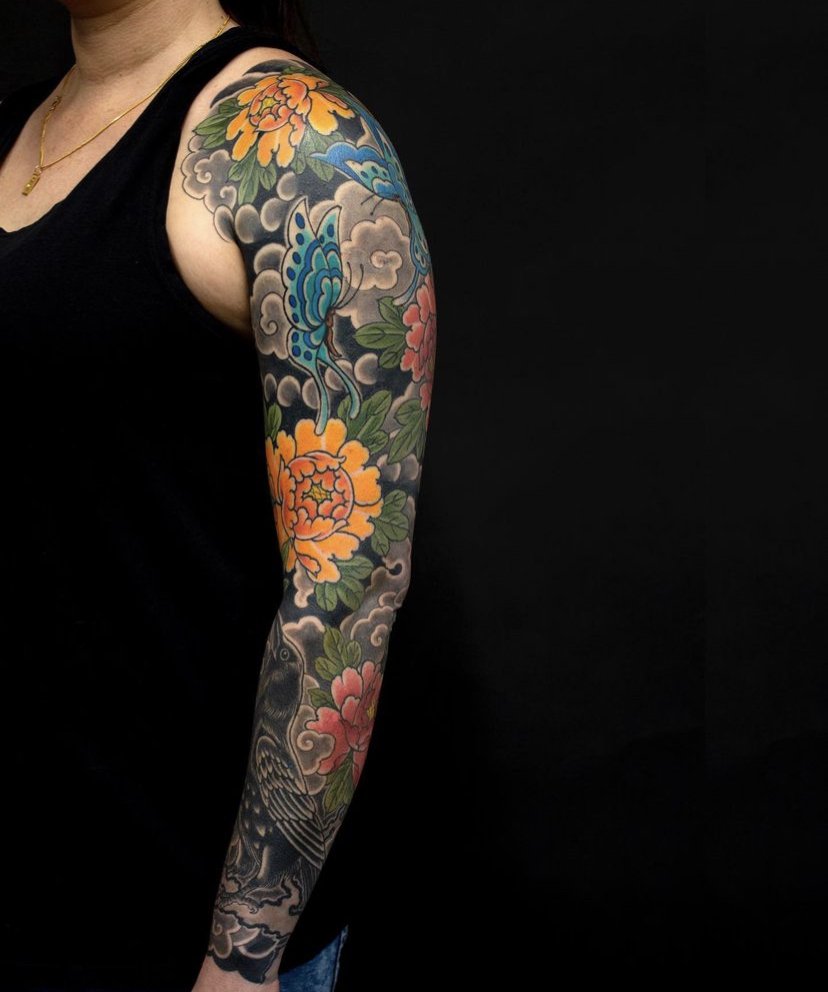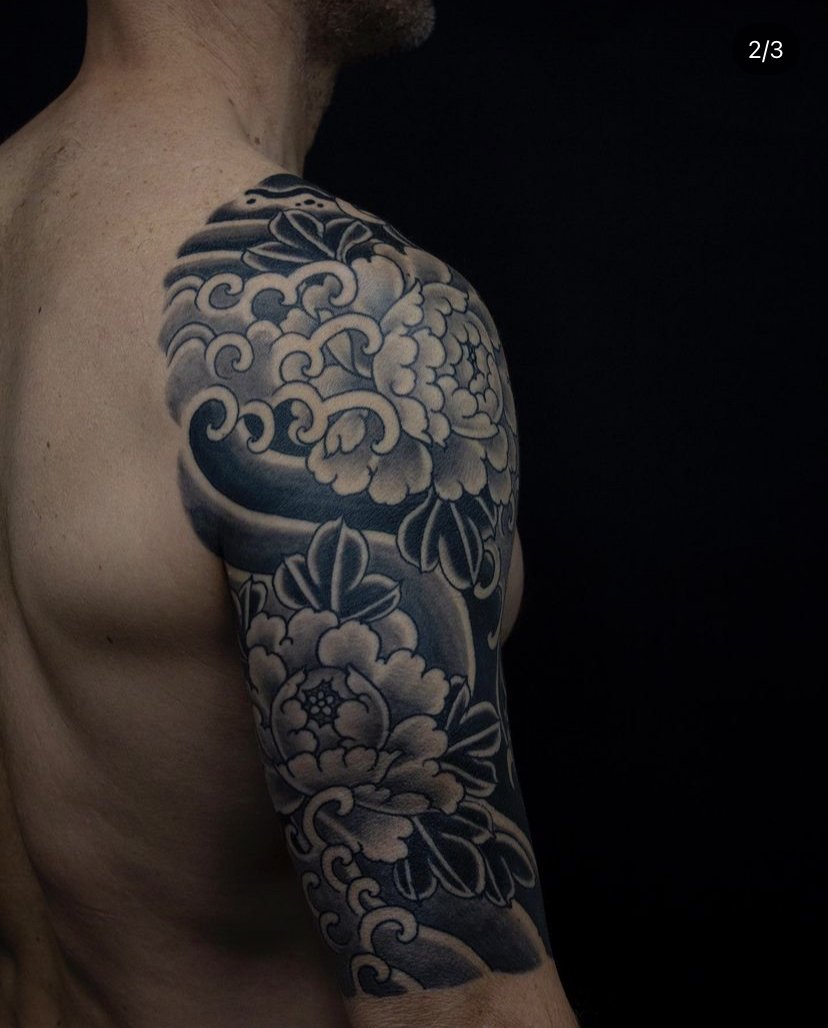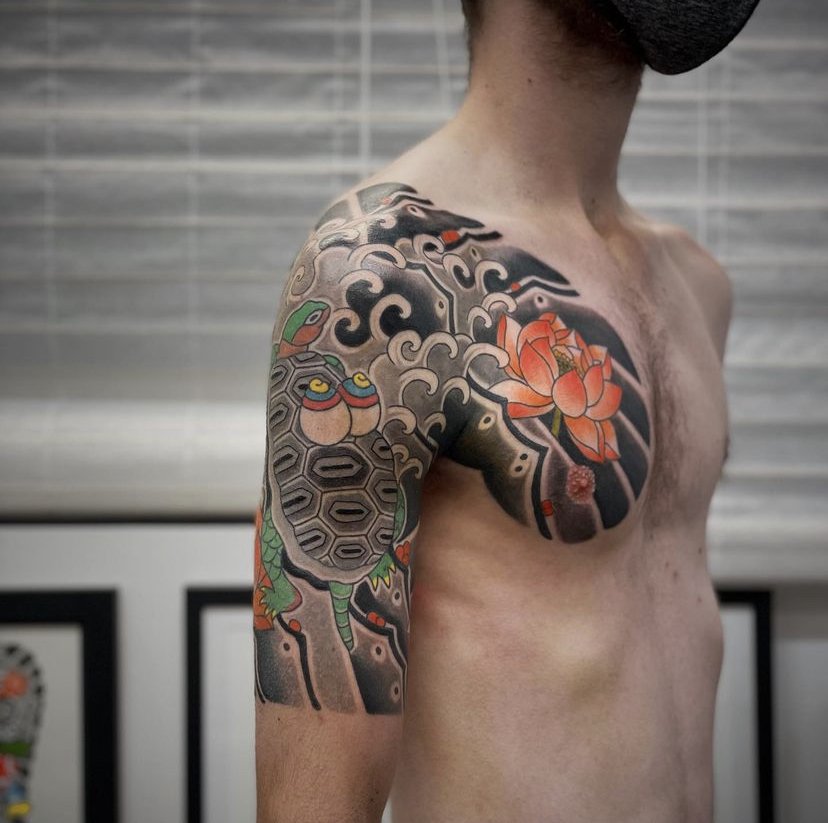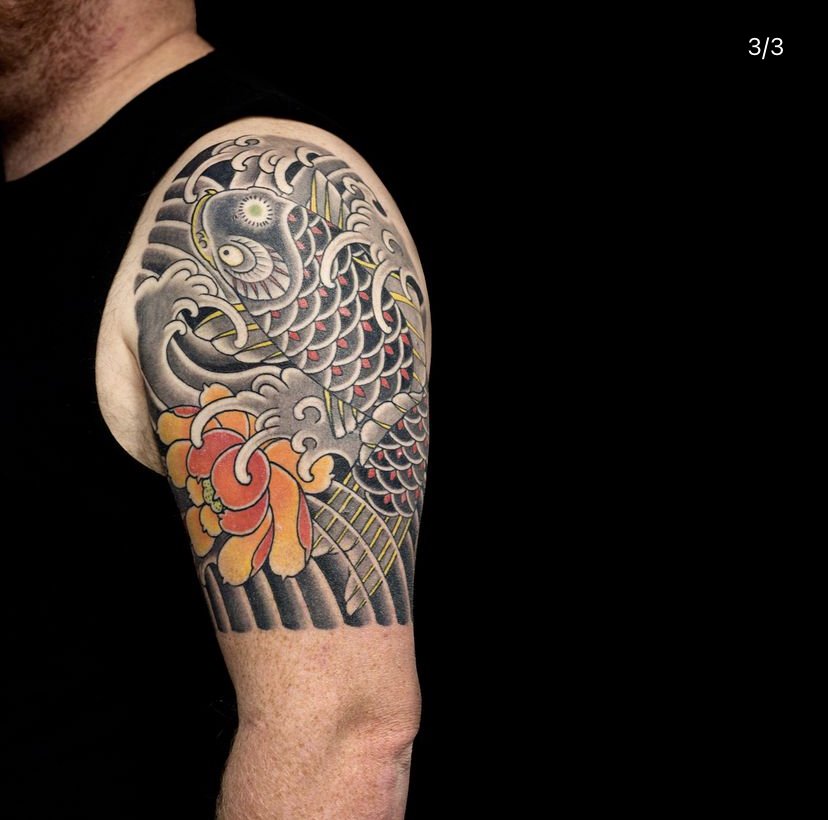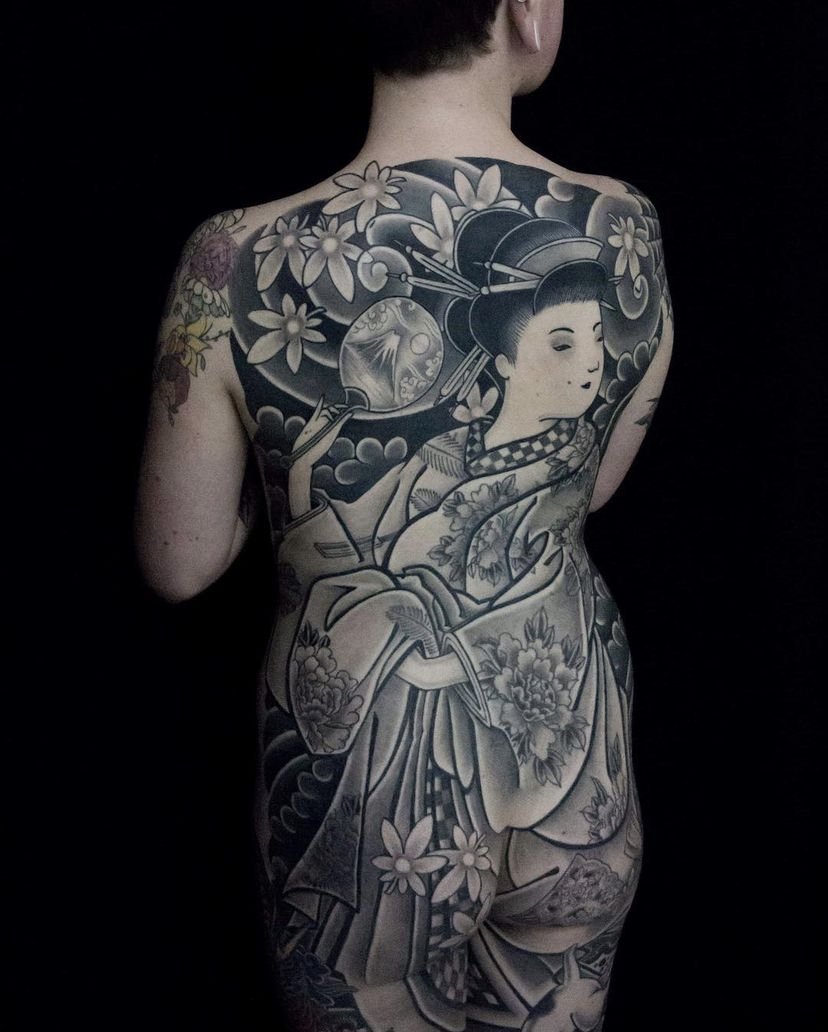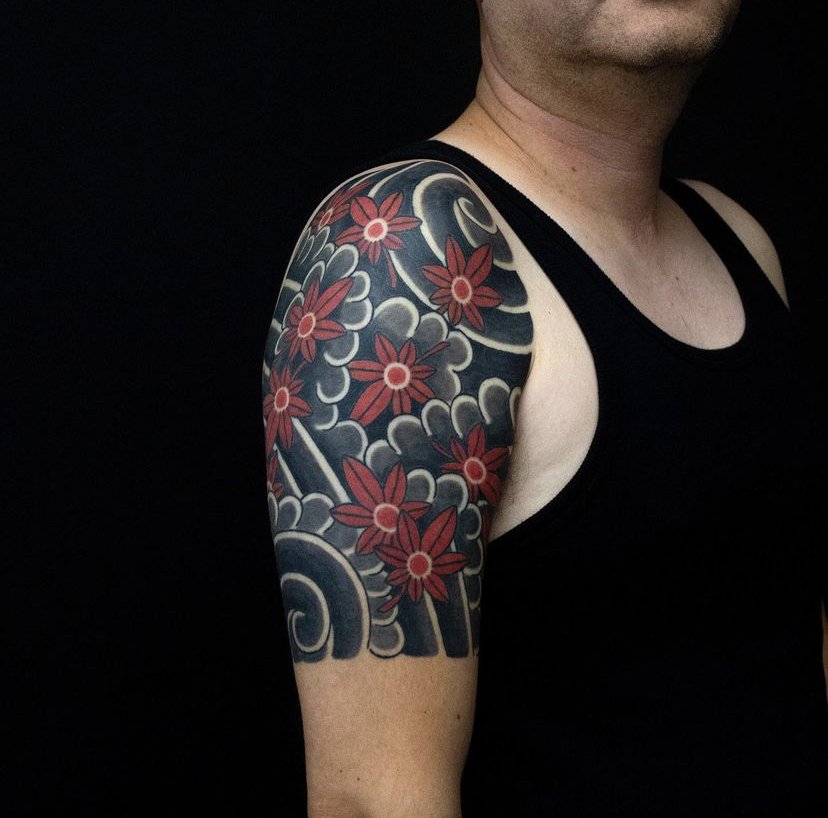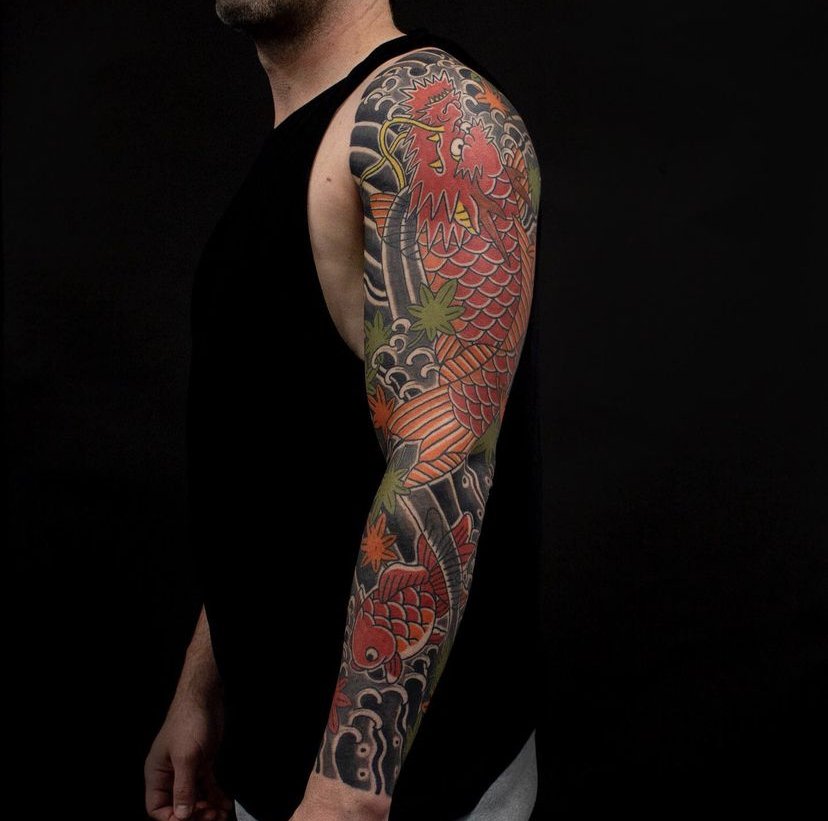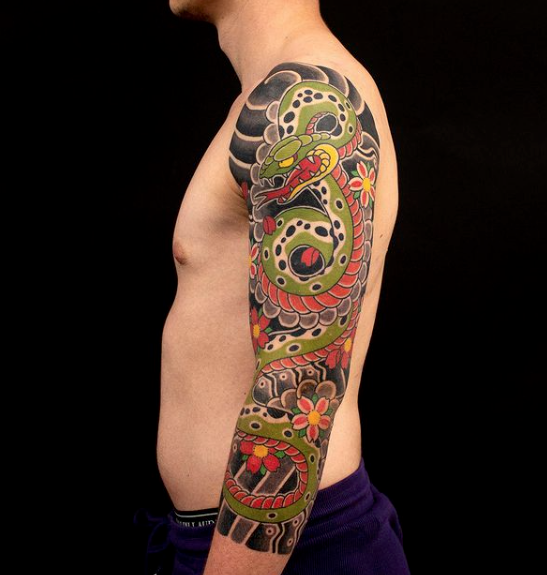Traditional Japanese tattooing is typically created with three main elements, Background or “Gakubori”, the main subject matter, and an often overlooked complimentary floral element.
Floral elements are an important element of Traditional Japanese tattooing. They have a variety of meanings in Japanese culture, and when paired correctly with the right subject matter, they can create a harmonious tattoo rich with history and tradition.
The Peony or “Botan” in japanense culture is the king of flowers. Botan tattoos symbolise wealth, good fortune and prosperity. The peony is a strong symbol of beauty, fragility and transitory nature of existence. Furthermore, they depict that getting great rewards is only possible by taking great risks. Peony were imported to Japan from China for their medicinal qualities, “shishi” or foo dogs are also an import from Chinese culture, so pair well together for his reason. However there is also a folk tale of a shishi eating the peony and being cured of an illness, which adds to the reasoning behind this traditional pairing.

